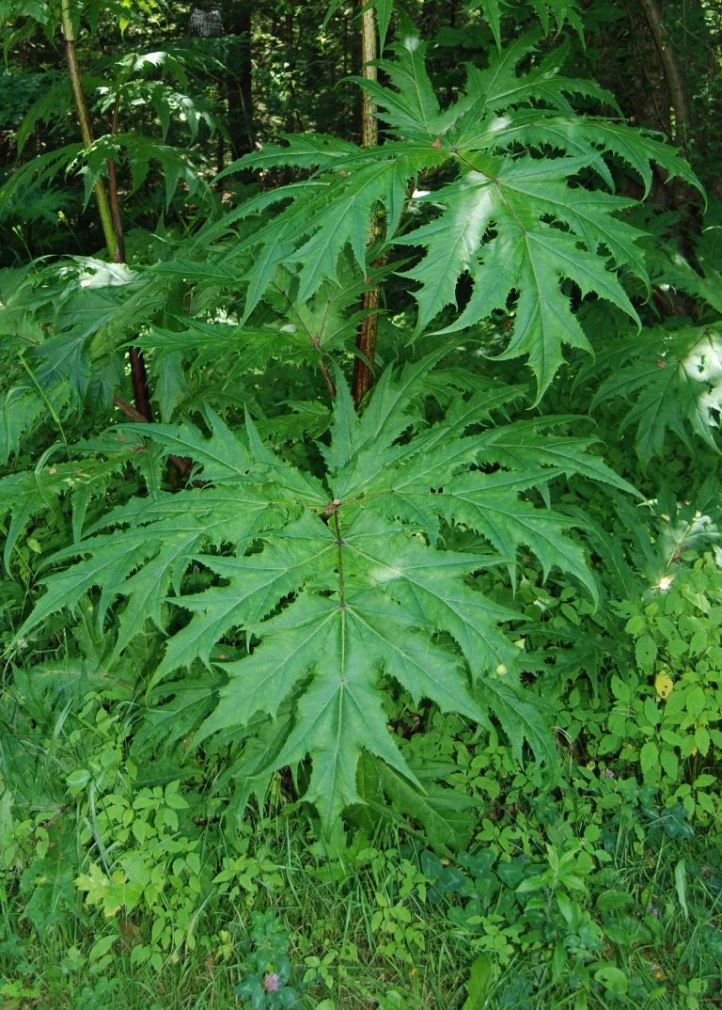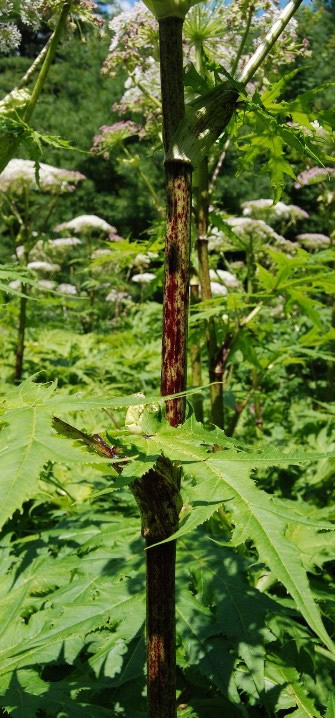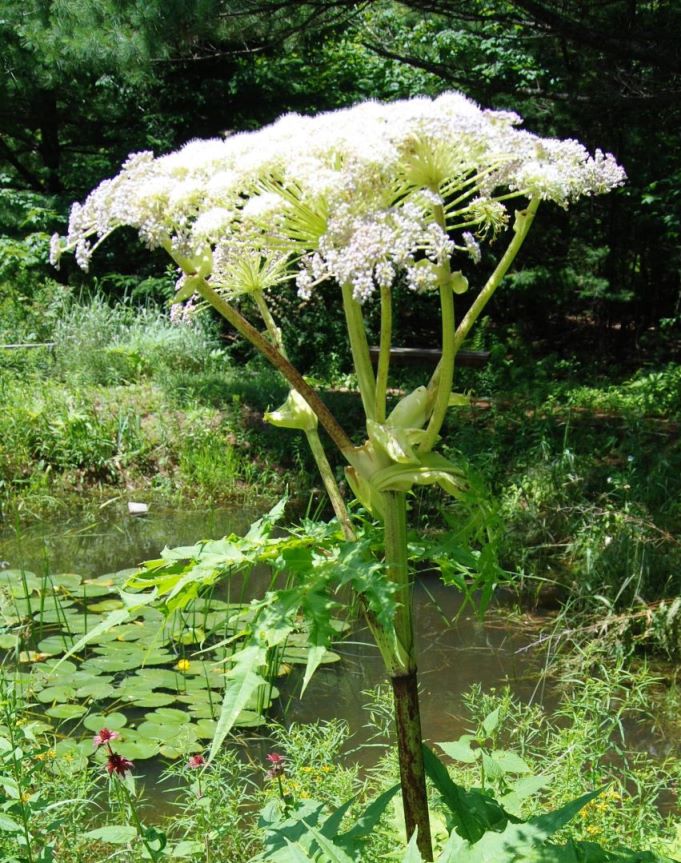DACF Home → Bureaus & Programs → Bureau of Agriculture → Division of Animal and Plant Health → Horticulture Program → Giant Hogweed → Look-a-Likes
Giant Hogweed: Identification Information
Giant Hogweed, Heracleum mantegazzianum is found sporadically throughout Maine, but is not a common plant. Giant hogweed is noteworthy because its sap causes severe skin irritation. When susceptible people come in contact with the sap and the skin is exposed to sunlight painful blisters develop. Giant Hogweed Control and Safety Information
Several plants are often confused with giant hogweed; it is important to accurately identify plants before taking actions.
Click on pictures for a larger image.
Plant Name |
Plant Picture |
Leaf |
Stem |
Flower |
|---|---|---|---|---|
Giant Hogweed, Heracleum mantegazzianum |
||||
Plants taller than 8 feet |
Unevenly lobed leaves, up to 5 feet across |
Green stems with purple blotches. Stems are 2-4 inches wide and hollow with rigid hairs |
White flower clusters that appear in late June and July. Flowers are similar to queen-Anne’s-lace, but much larger, up to 2 feet across. |
|
| Toxic Properties: Clear watery sap has toxins that cause photo dermatitis. Skin contact followed by exposure to sunlight produces painful, burning blisters that may leave purple or black scars. Eye contact can cause temporary or permanent blindness. Control and Safety Information | ||||
Plant Name |
Plant |
Leaf |
Stem |
Flower |
|---|---|---|---|---|
| Cow Parsnip, Heracleum maximum | 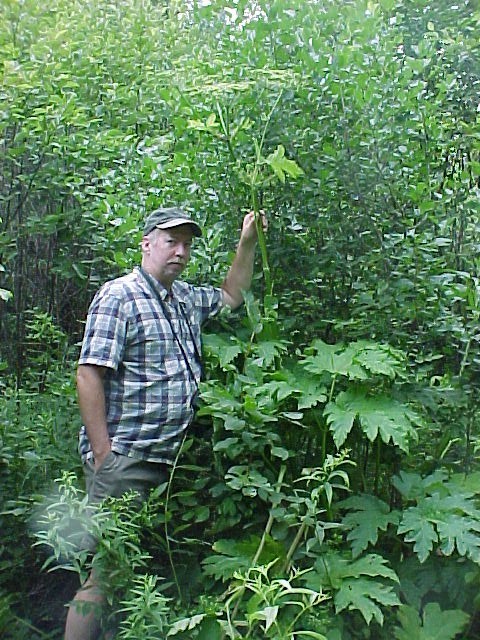
| 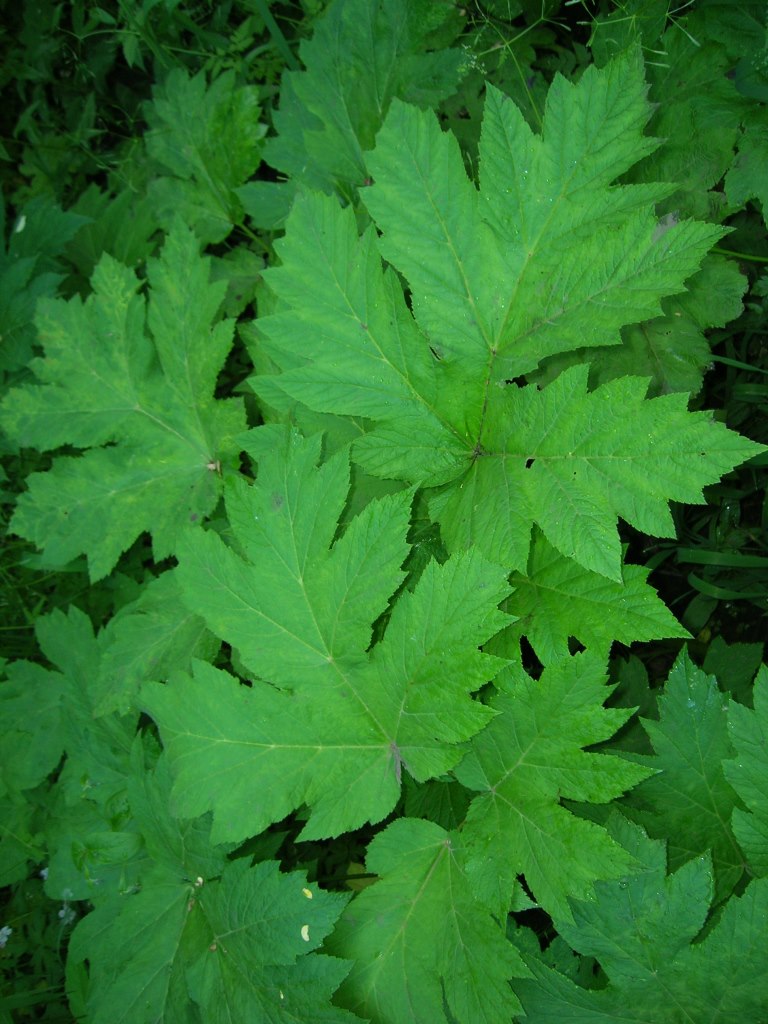 |
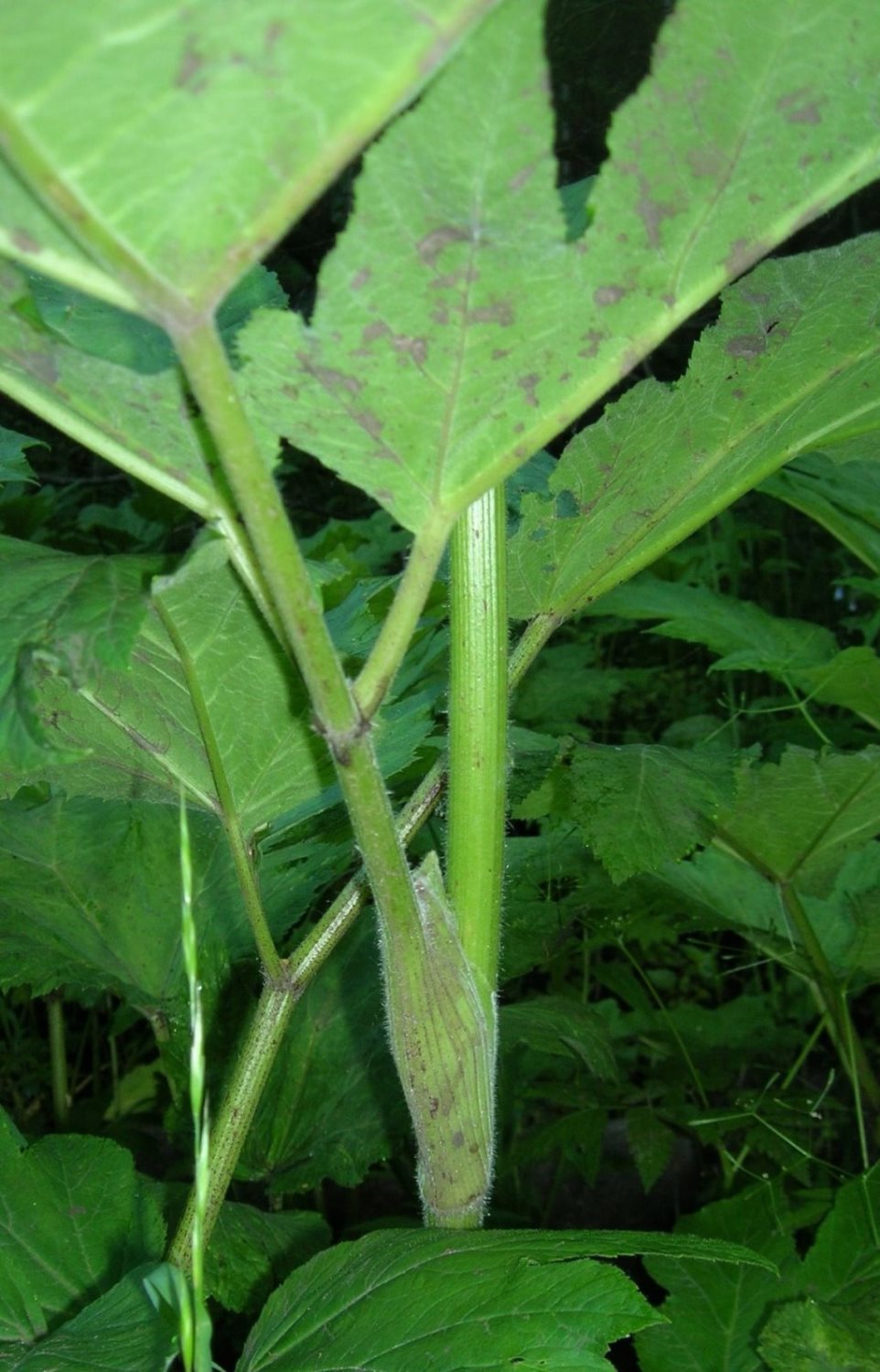 |
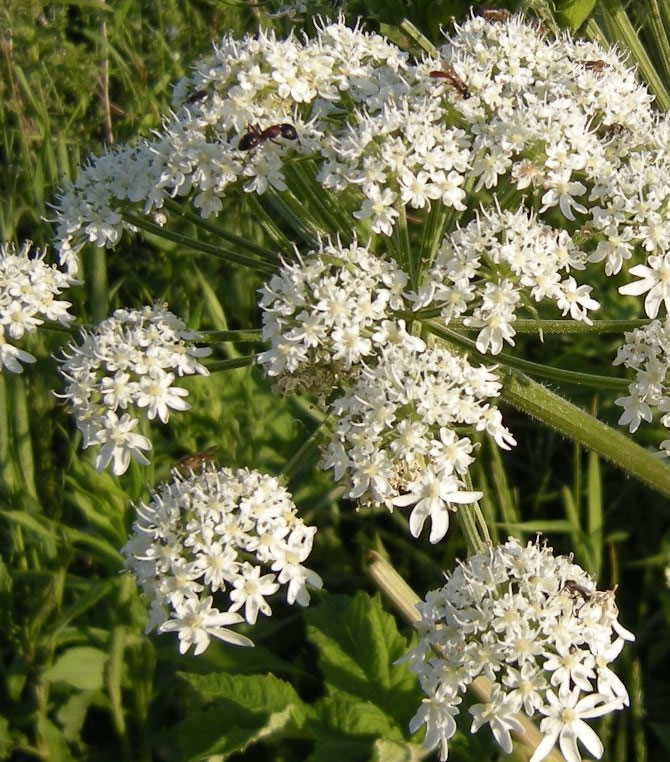 |
| Plants are 5 to 8 feet tall, can cause a blistery rash in sensitive individuals | Leaves are 2 to 2 1/2 feet and covered in soft hairs that may give a velvety appearance | Deeply ridged stems maybe green or slightly purple and 1 to 2 inches in diameter. Hairs are fine, soft and fuzzy | Flowers several weeks before giant hogweed. Flower clusters are up to 1 foot across. | |
Toxic Properties:The sap from Cow Parsnip leaves and stems may sensitize the skin so that it is very easily sunburned. Washing off the sap and wearing long sleeves for a few days apparently is the ticket after exposure. Management recommendations NYDOT |
||||
| Water Hemlock, Cicuta maculata | 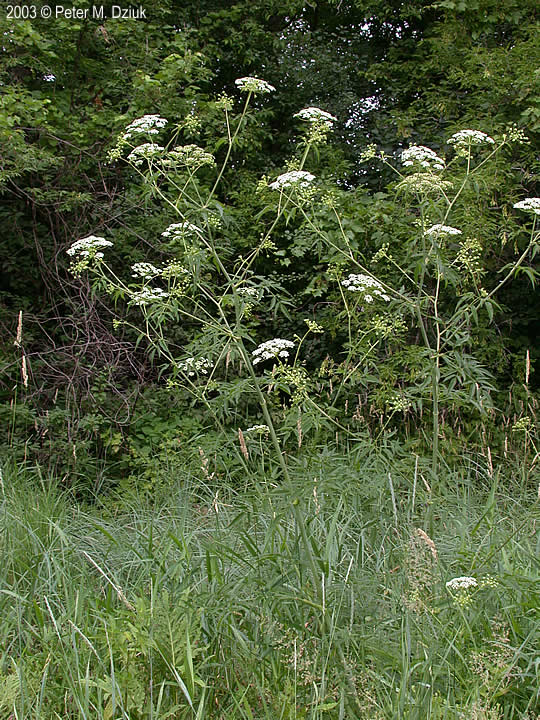
| 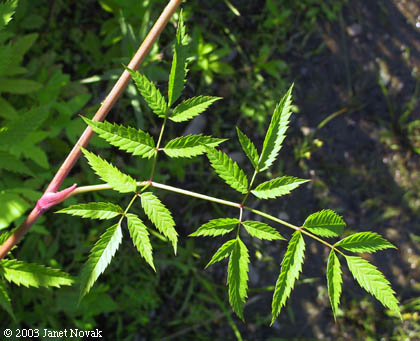 |
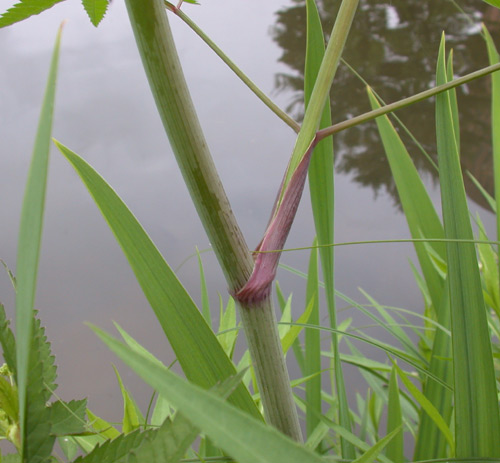 |
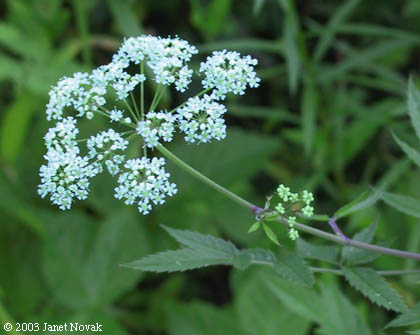 |
Plants are 3 to 6 feet tall, and all plant parts are poisonous |
Leaflets are up to 4 inches long and 1 1/4 inches wide with sharp pointed teeth and veins that end in each notch | Stems are many branched and may be green or purple, or have purple streaks or spots | Flowers are white umbels up to 6 inches across with 12 - 15 groups of umbellets with 10 or more in each cluster | |
Toxic Properties: A native plant and all parts can be deadly! The seedlings, seed heads and roots are most deadly. Contact poison control center and obtain emergency medical assistance as soon as possible. Poisoning symptoms include severe seizures and convulsions. One of the most toxic plants native to the United States. Management recommendations UNCE (PDF) |
||||
| Angelica, Angelica atropurpurea | 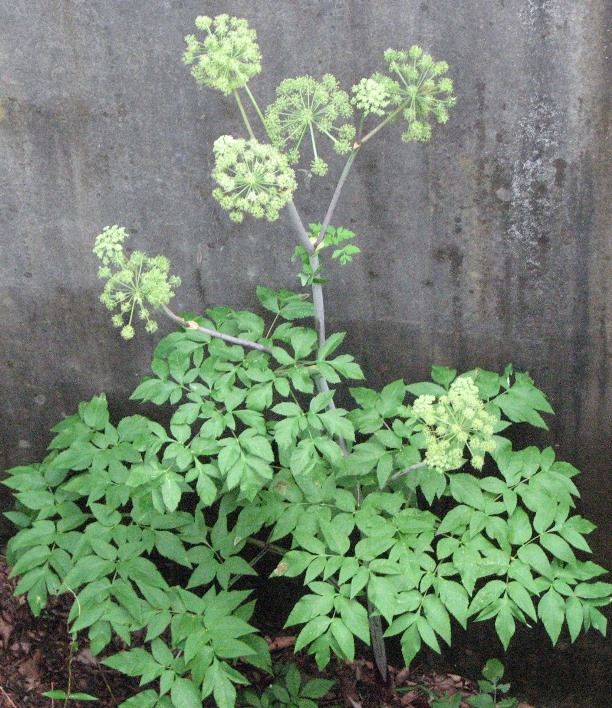
| 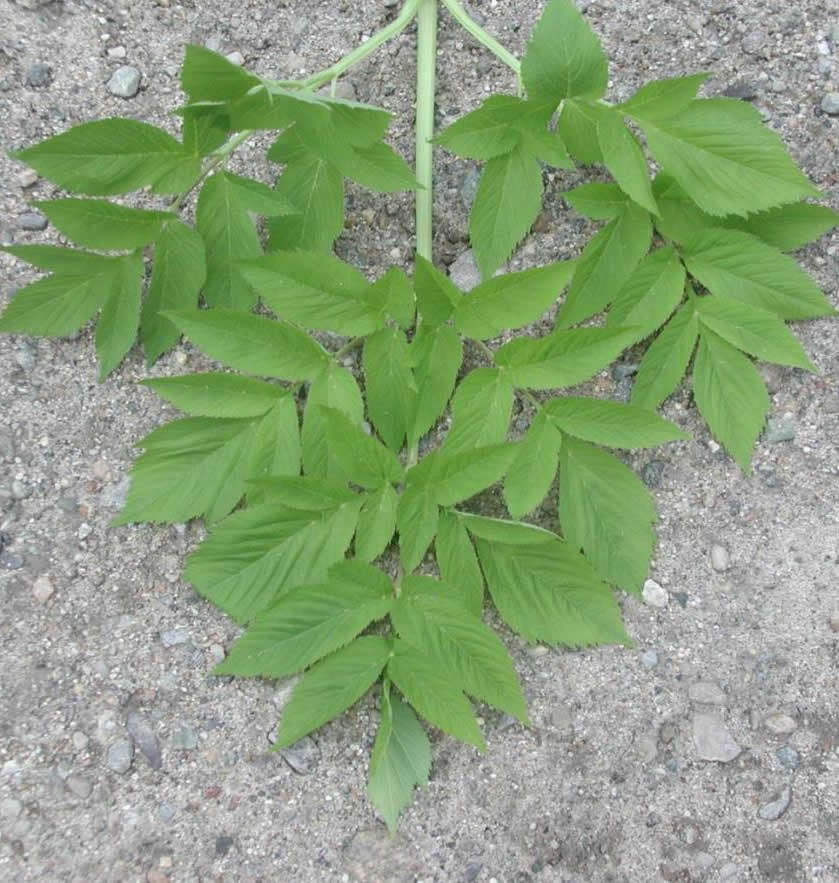 |
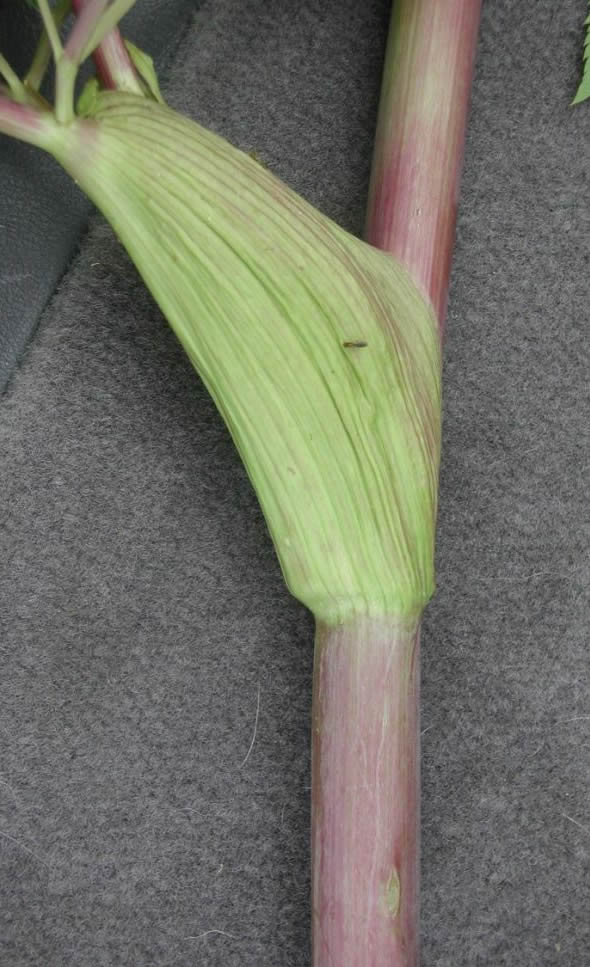 |
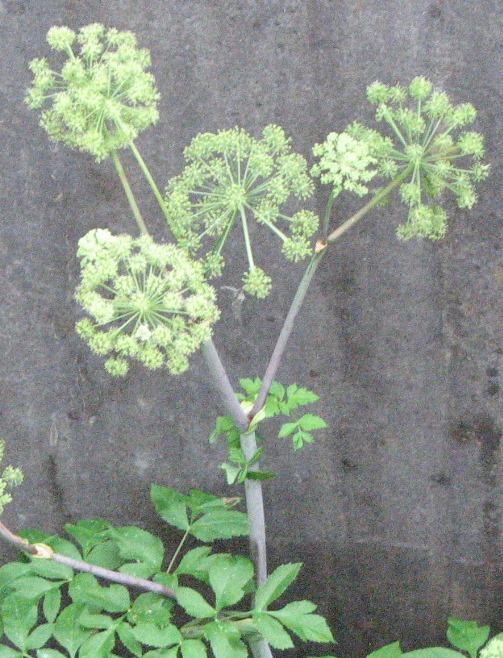 |
| Less than 8 feet tall | Compound leaves can reach 2 feet wide and have dozen of small leaflets | Waxy green to purple, smooth, hollow stems, 1 to 2 1/2 inches in diameter | Softball size clusters of white or greenish white flowers, less then 1 foot in diameter | |
Toxic Properties: Angelica has long been used as a medicinal herb and is far less likely to cause a skin reaction than it's more toxic cousins. Cultivation and management Michigan State University (PDF) |
||||
| Queen-Anne's Lace, Daucus carota | 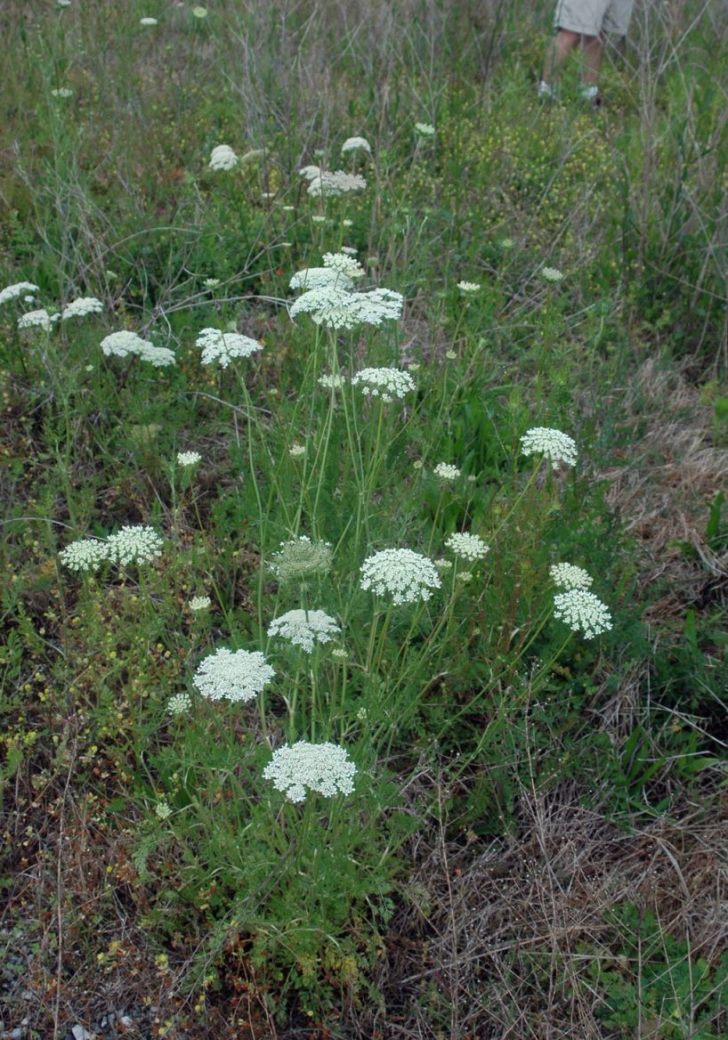 |
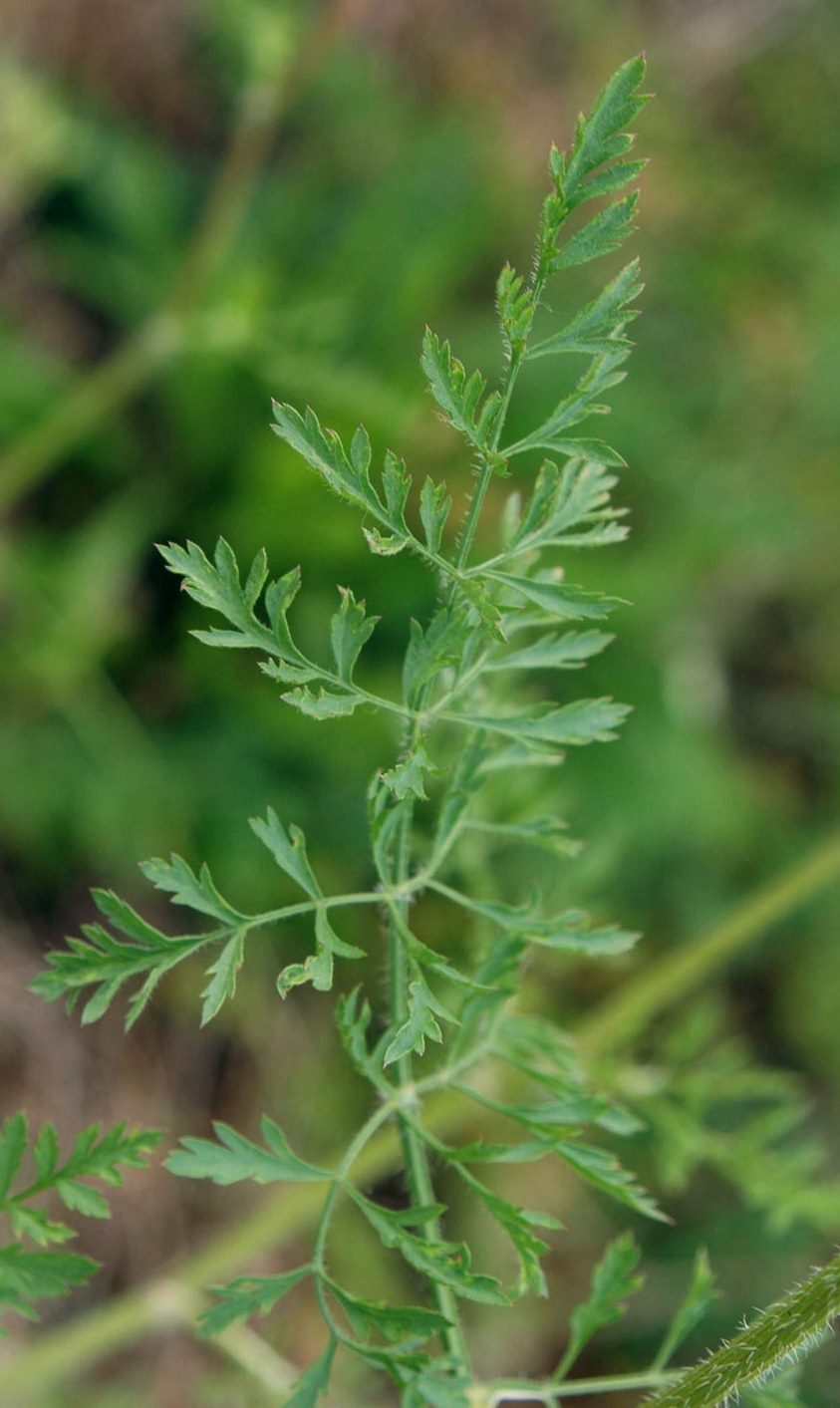 |
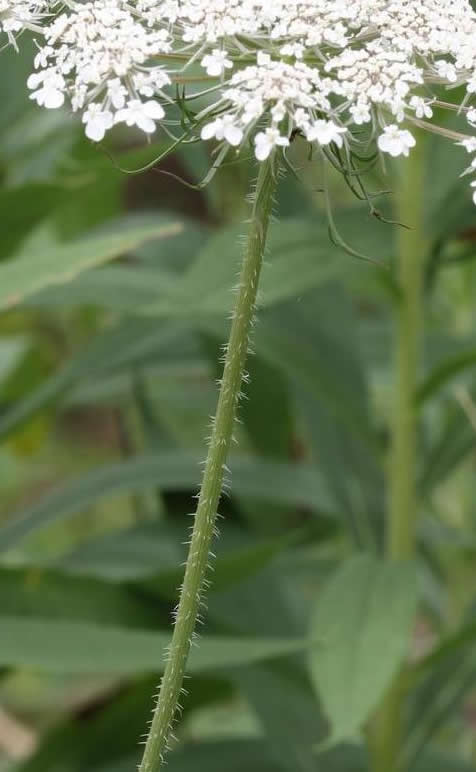 |
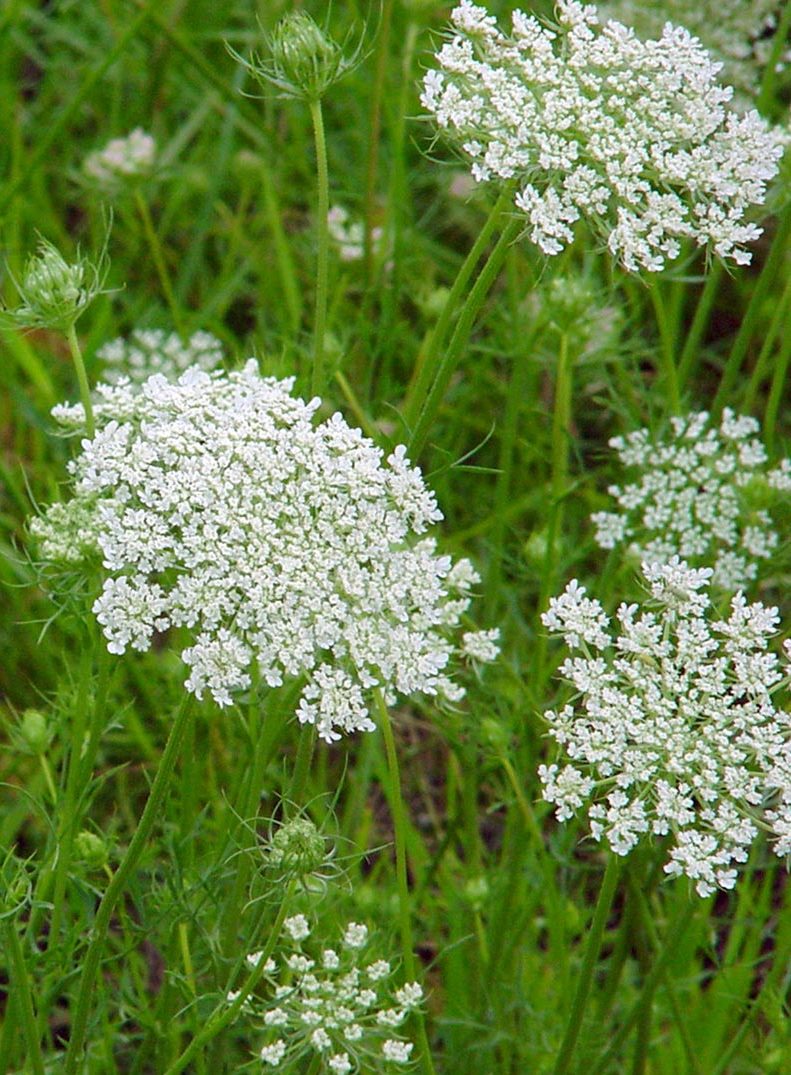 |
| Plants are 1 to 4 feet tall | Lacy, fern-like leaves | Slender, hairy, hollow, green stems | Small white flowers in a flat cluster 3 to 4 inches wide from May to October | |
Toxic Properties: Contact with sap can cause dermatitis reaction which is aggravated by exposure to sun. Management recommendations Minnesota DNR |
||||
| Poison Hemlock, Conium maculatum | 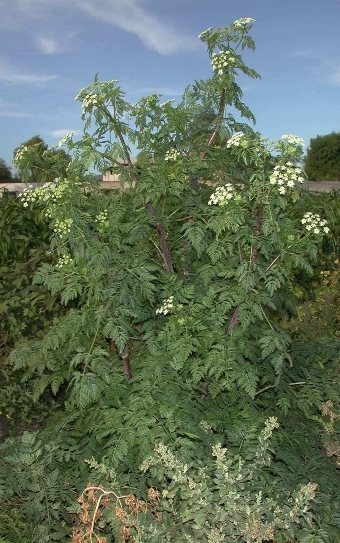 |
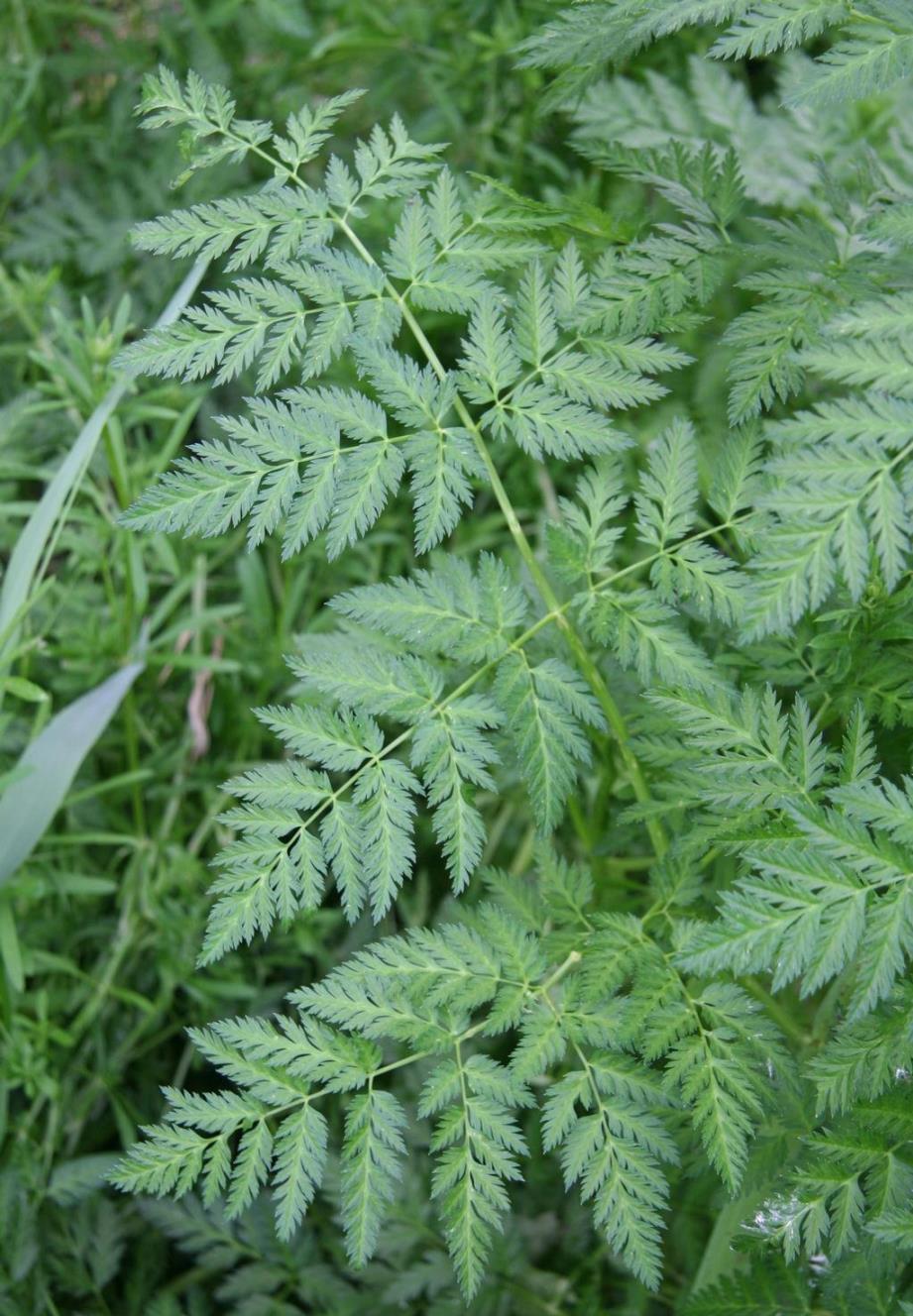 |
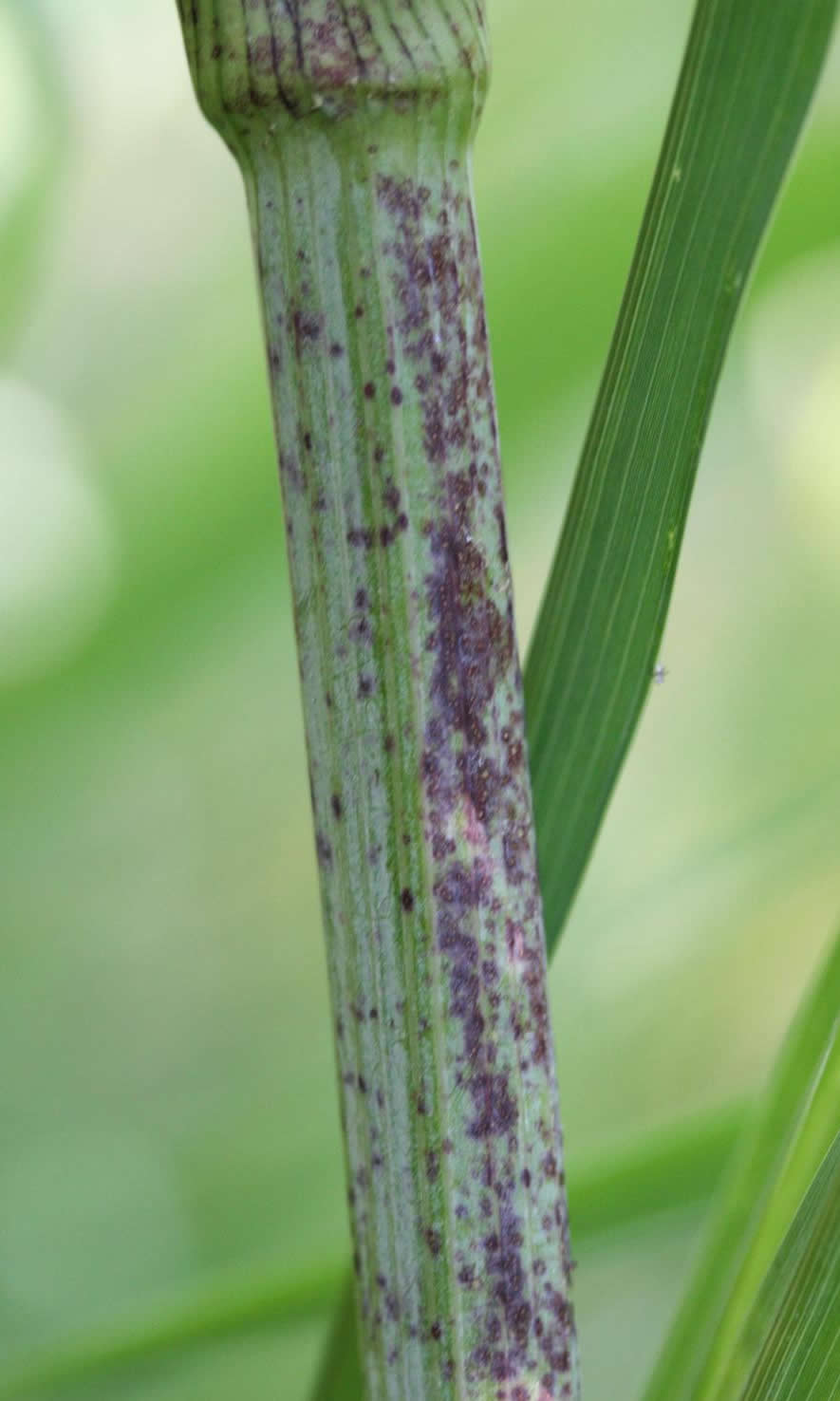 |
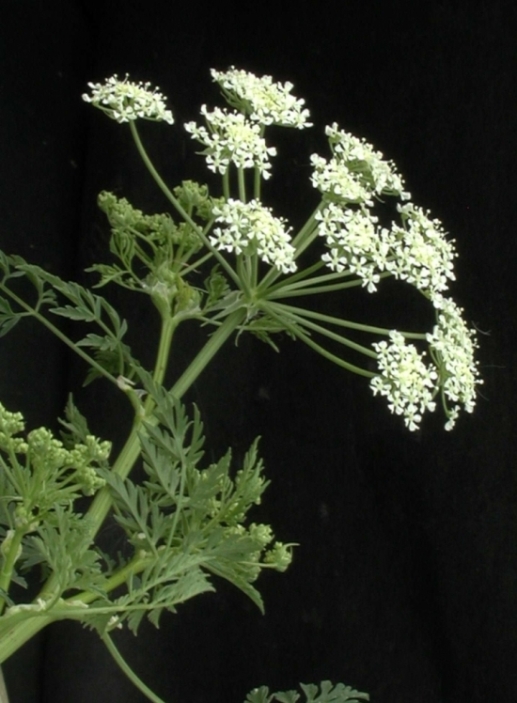 |
| Plants are 4 to 9 feet tall. | Bright green fern-like leaves, maybe glossy | Smooth, waxy stems with purple blotches | Small white flowers in numerous flat topped clusters on all branches | |
Toxic Properties: An introduced plant and all parts can be deadly! Seeds contain highest concentration of poison, are often mistaken for caraway. Can cause toxic reactions when inhaled. Human deaths have occurred from consuming roots, being mistaken for wild carrots or parsnips. In ancient Greece, it was used to poison political prisoners. Socrates drank the poisonous juice to commit suicide. Native Americans once used hemlock to poison tips of arrows. Management recommendations USDA-Forest Service (PDF). |
||||
| Wild Parsnip, Pastinaca sativa | 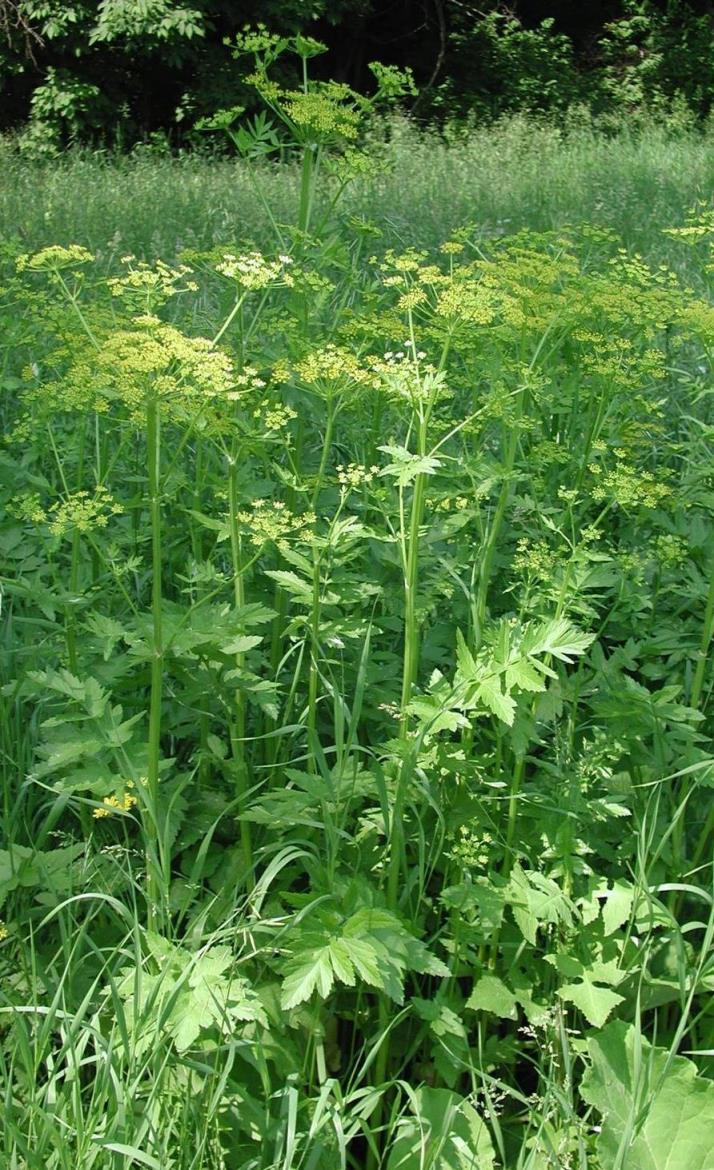 |
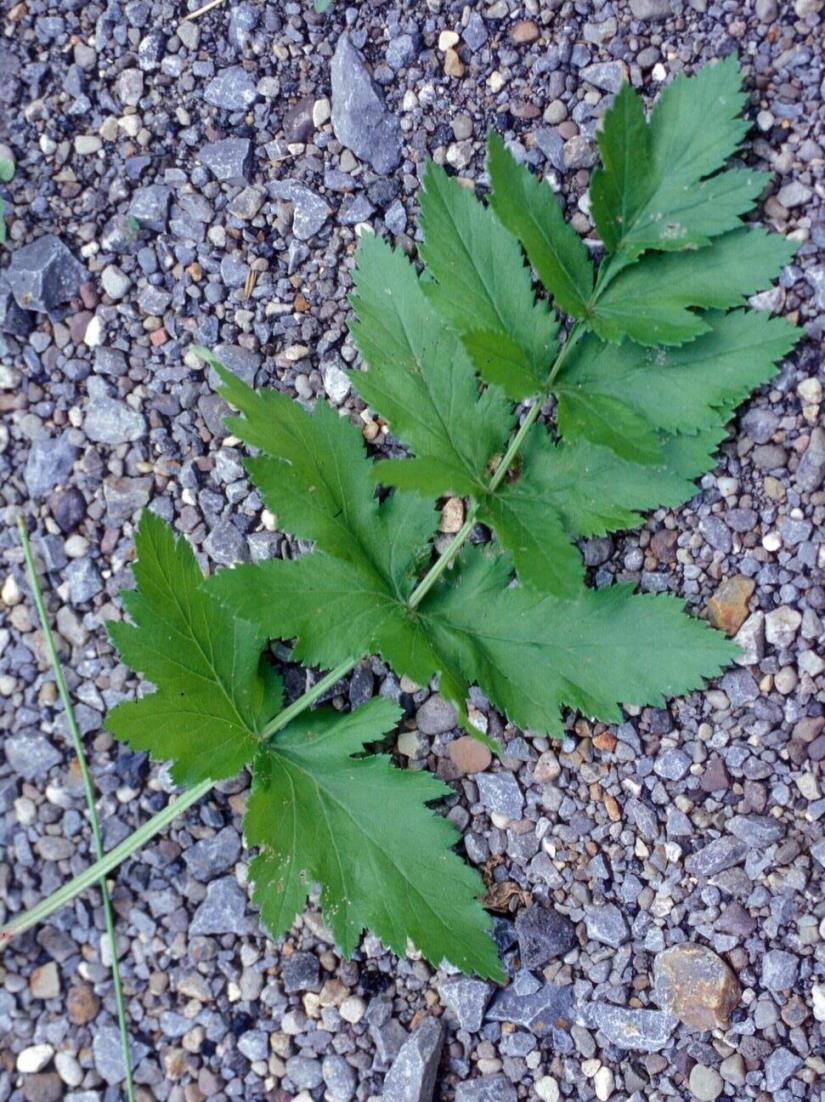 |
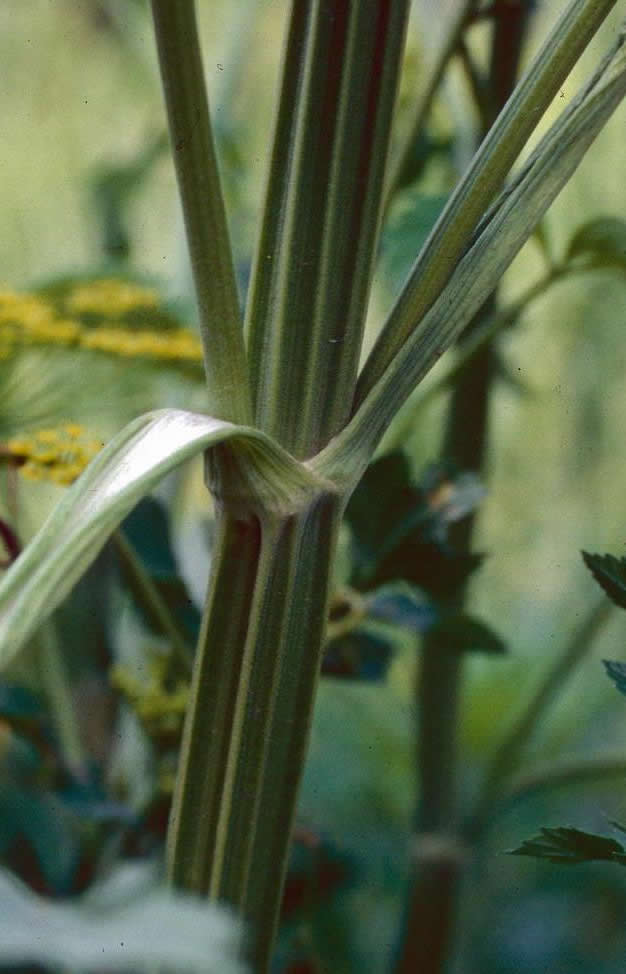 |
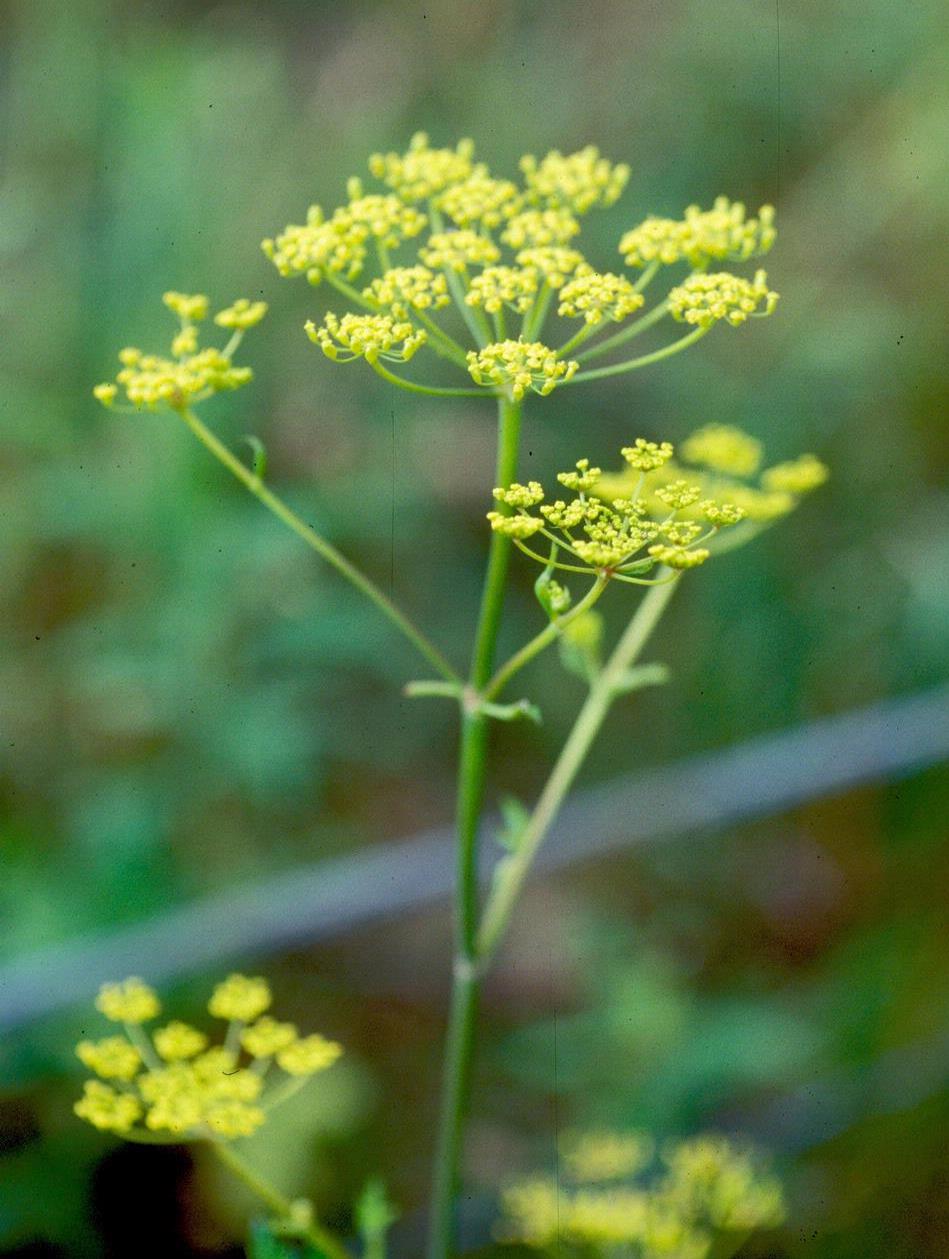 |
| Plants are 2 to 5 feet tall | Compound leaves with a main stem with 5 to 15 leaflets | Grooved, hollow stems | Yellow flowers | |
Toxic Properties: It produces sap containing chemicals that can cause human skin to react to sunlight, resulting in intense burns, rashes or blisters. BMPs- Ontario Invasive Plant Council (PDF) and Ontario's Invading Species Awareness Program |
||||
| Wild Lettuce, Lactuca sp. | 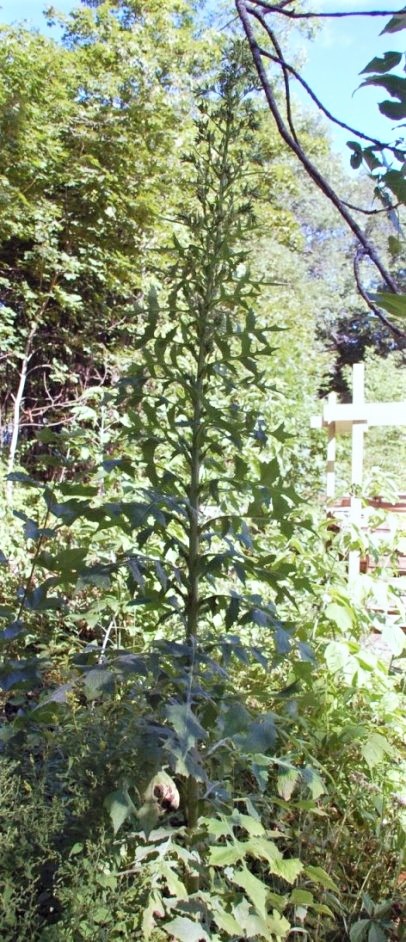 |
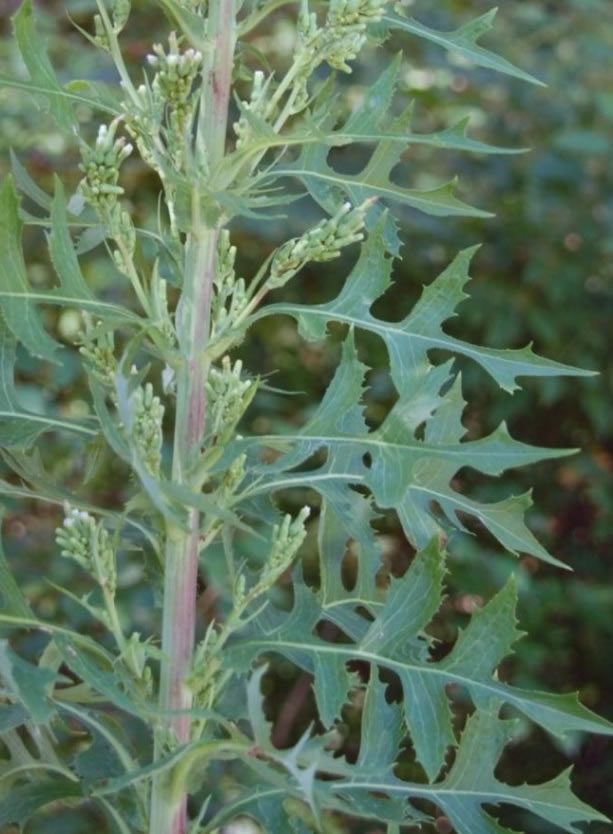 |
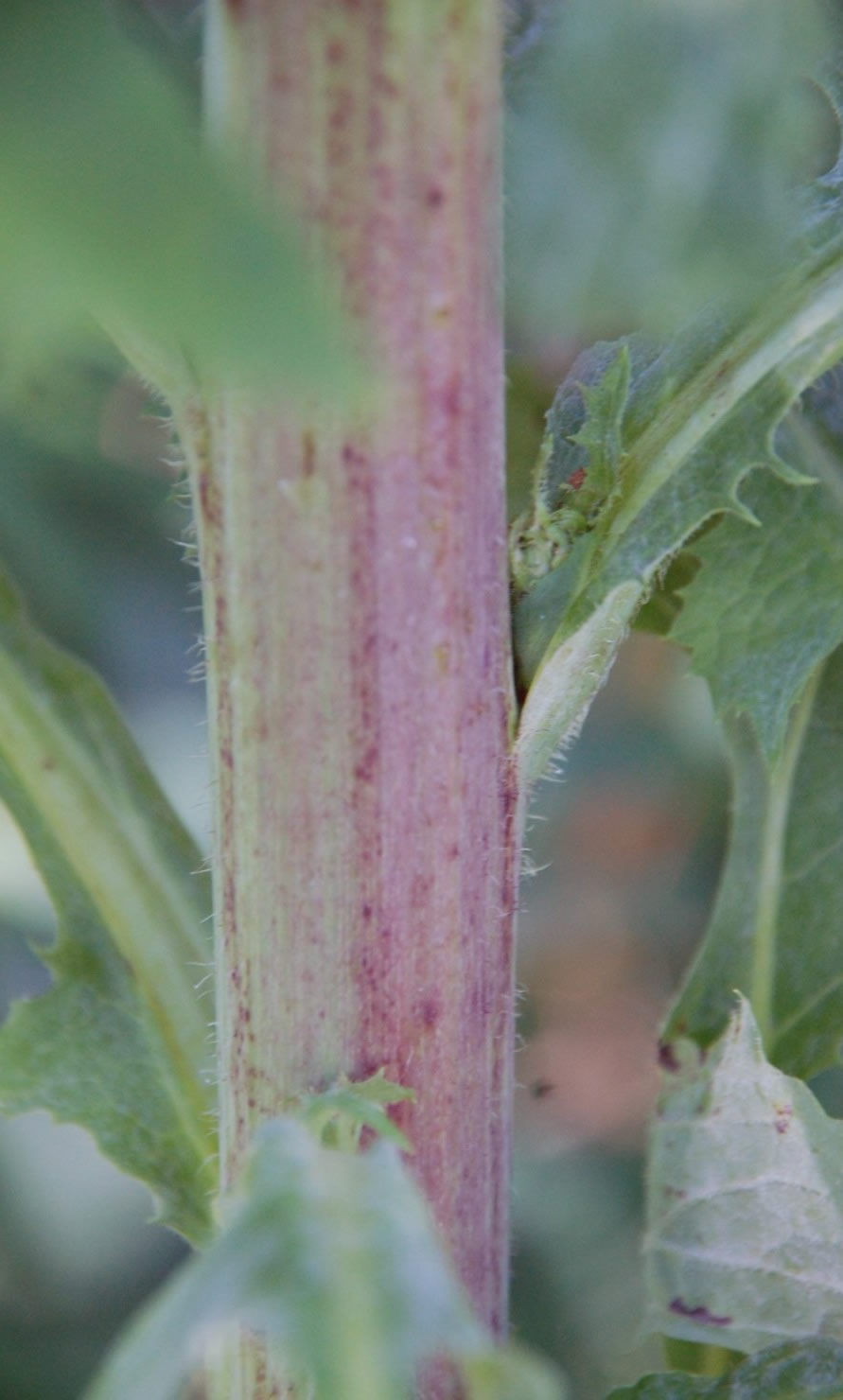 |
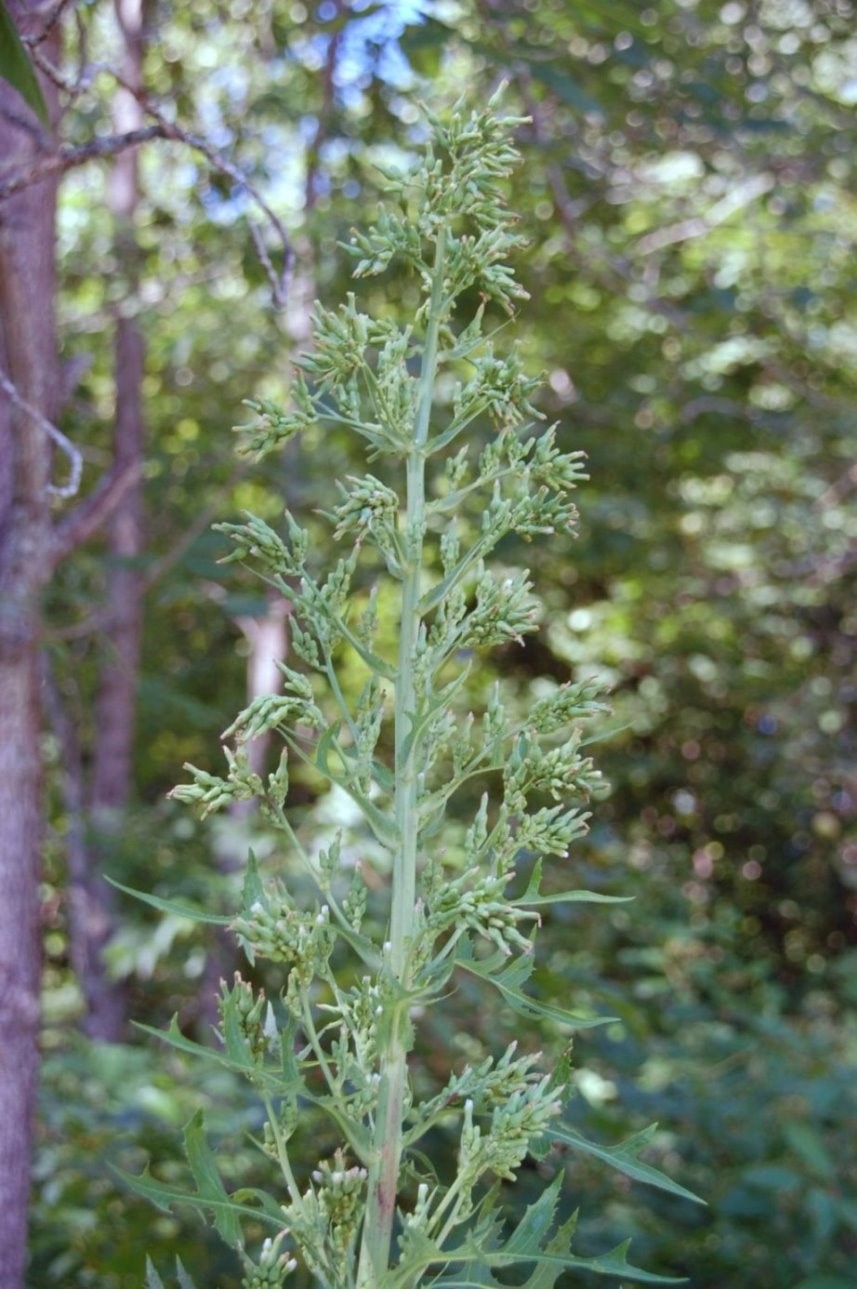 |
| Plants are up to 6 feet tall | Leaves are arranged alternately on stem and are 2 times longer than wide | Stems may be slightly purple | Small dandelion-like flowers | |
Toxic Properties: Contact with sap can cause dermatitis reaction which is aggravated by exposure to sun. Management recommendations Ontario Ministry of Agriculture, Food and Rural Affairs |
||||
| Valerian, Valeriana officinalis | 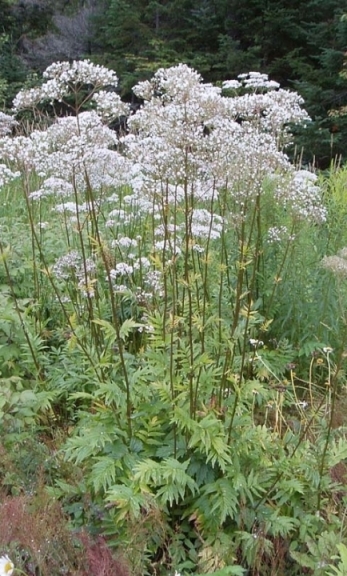 |
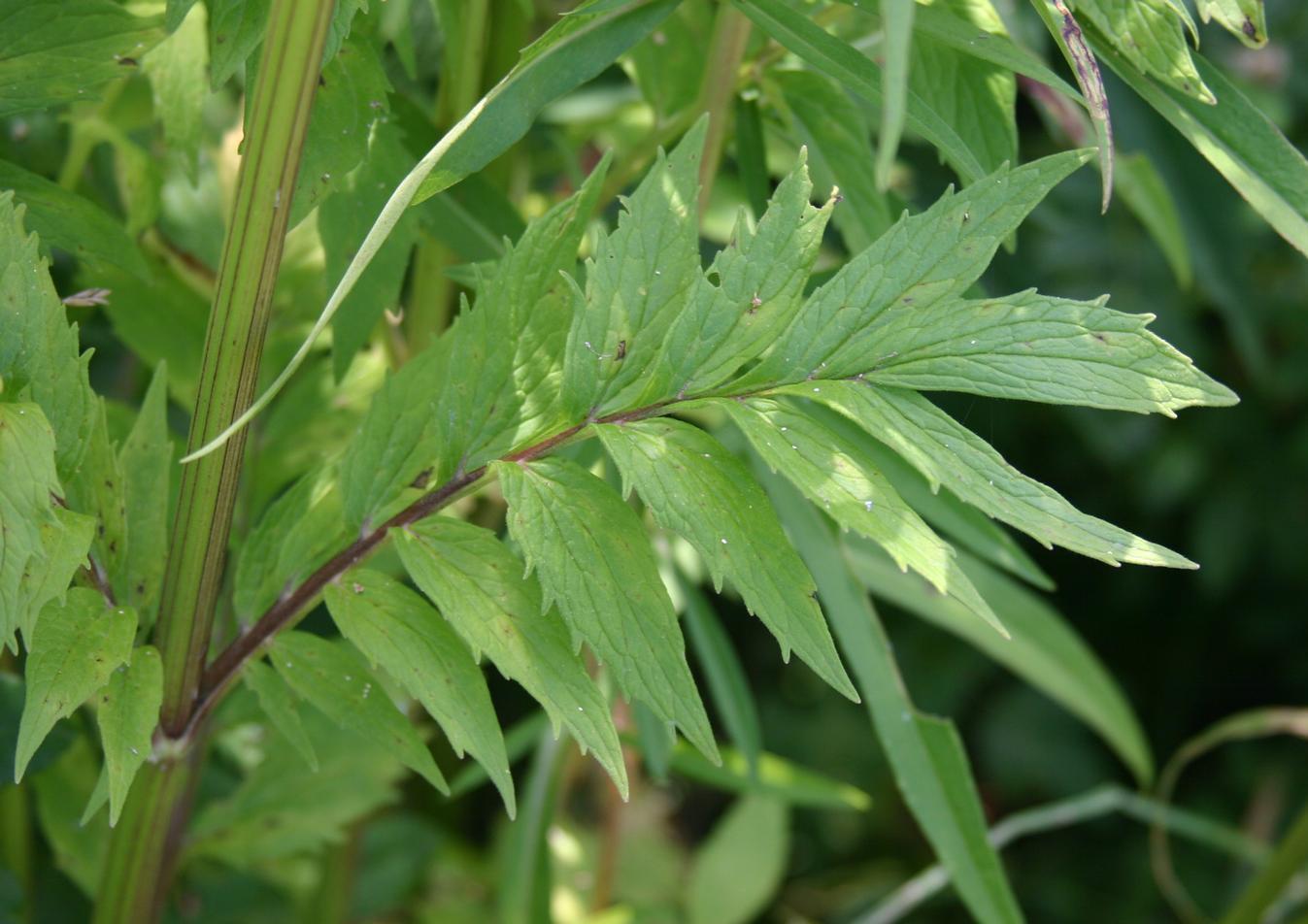 |
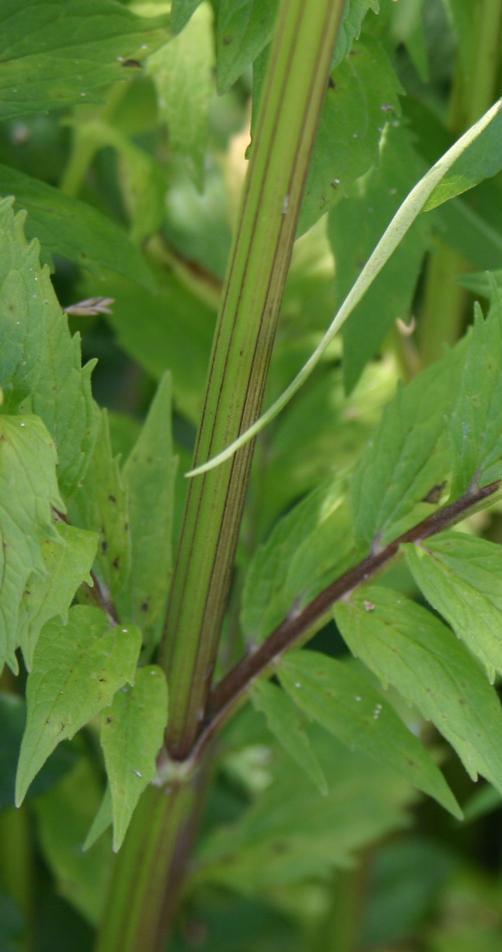 |
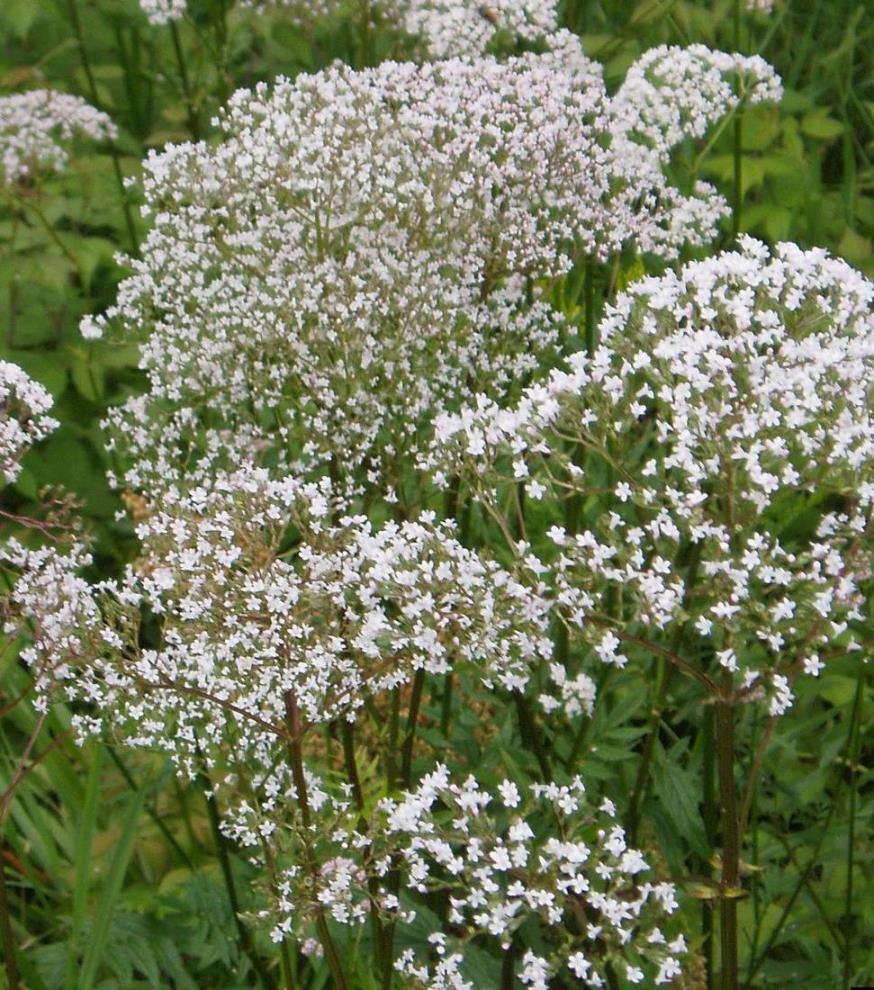 |
| Plants are 3 to 5 feet tall | Compound leaves with 7 to 10 pairs of toothed, lanced shaped leaflets | Green stems | White to pink flowers in July | |
Toxic Properties: Valerian root extracts can cause headache, excitability and insomnia in some people. It is also used as an herbal medicine to help with sleep disorders. Management recommendations USDA - FS (PDF) |
||||
| Elderberry, Sambucus nigra ssp canadensis |  |
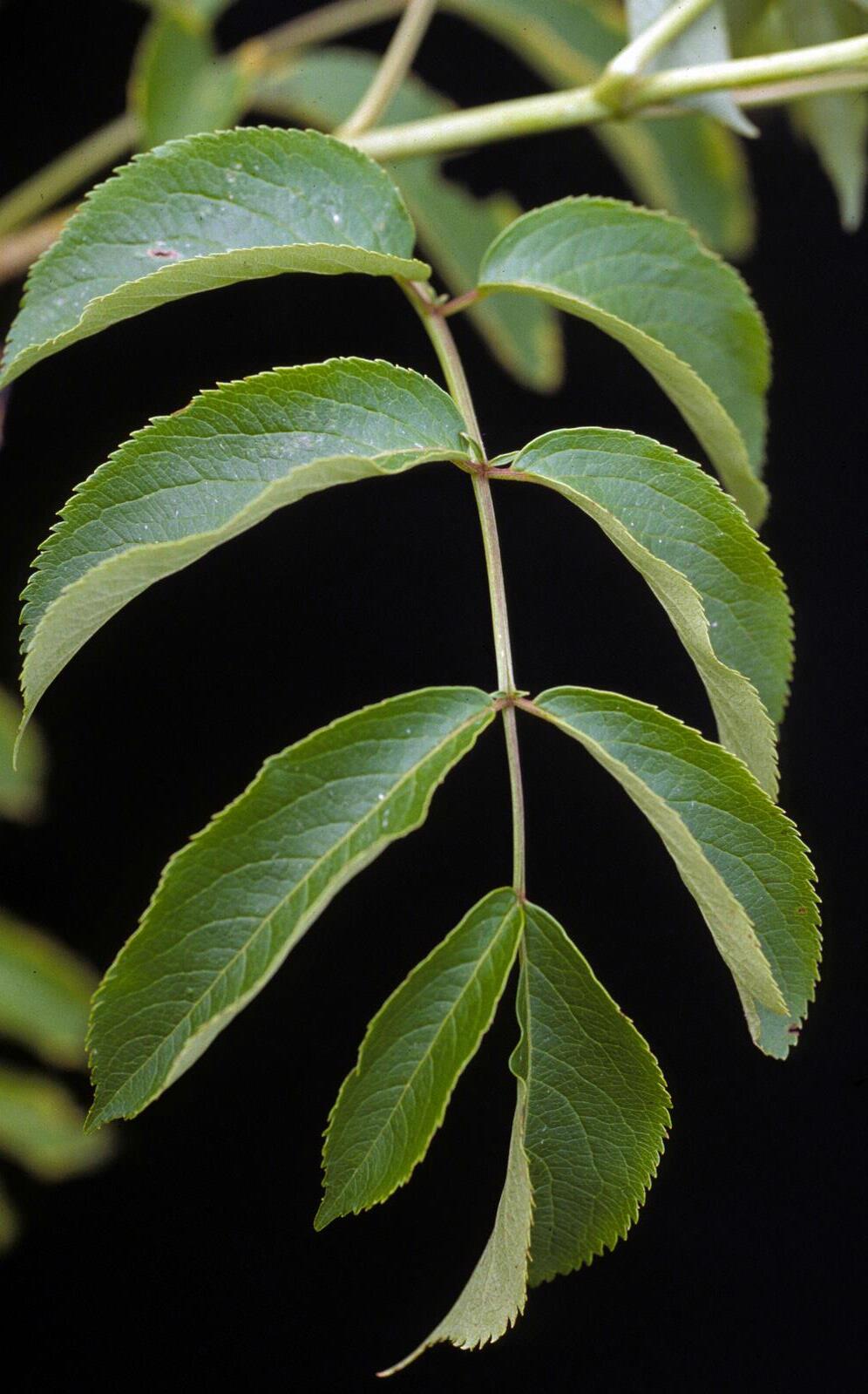 |
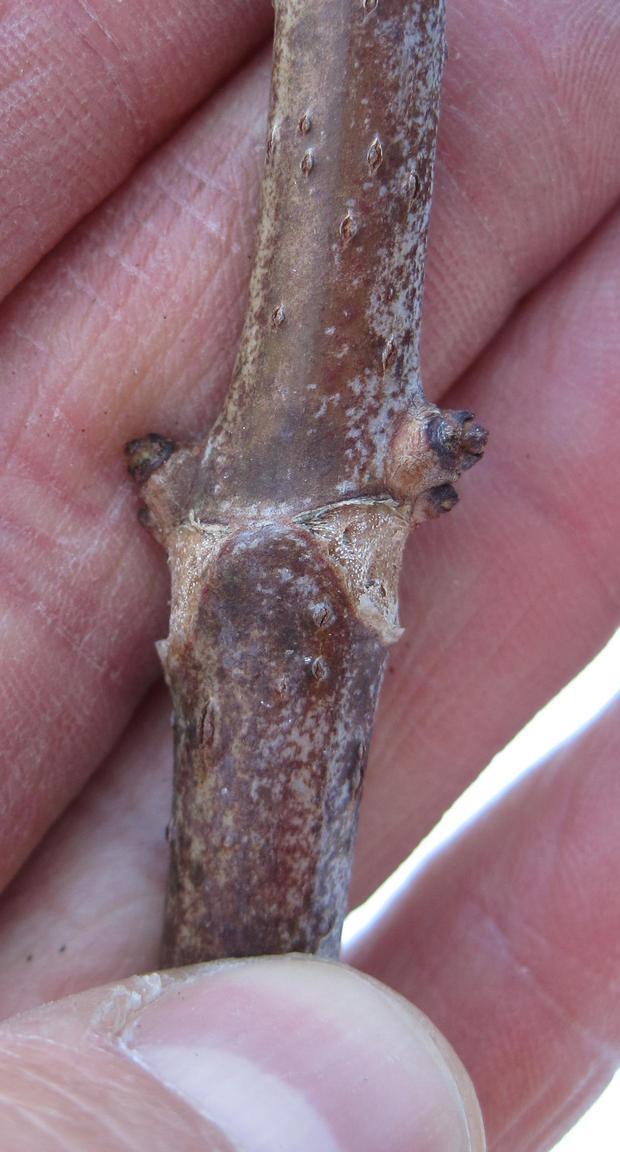 |
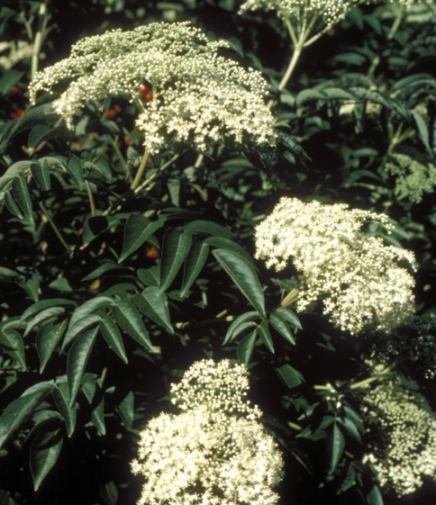 |
| Woody shrub up to 12 feet tall | Compound leaf, 6 to 11 inches long with 5 to 11 elliptical leaflets | Stout, silvery to yellow-gray, woody twigs | White flowers in flat topped cluster up to 8 inches across | |
Toxic Properties: Elderberries are edible but do contain alkaloids that can cause nausea in sensitive people. Management considerations USDA-FS |
||||
Image Citations, www.bugwood.org
Water Hemlock leaves and flowers, Janet Novak, Connecticut Botanical Society
Water Hemlock
full plant for height, Peter M. Dziuk, Minnesota Wildflowers
Water Hemlock stems, U-Mass Extension
Angelica leaf and stem, Leslie Mehrhoff, University of Connecticut
Angelica plant and flower, www.wildplantdatabase.net
Queen Anne's lace plant, leaf and flower, Chris Evans, Illinois Wildlife Action Plan
Queen Anne's lace stem, Rob Routledge, Sault College
Poison hemlock, plant and flower, Pedro Tenorio-Lezama
Poison hemlock stem, Chris Evans, Illinois Wildlife Action Plan
Poison hemlock leaf, Robert Videcki, Doronicum Kft.
Wild parsnip leaf and stem, Ohio State Weed Lab Archive, The Ohio State University
Wild parsnip flower, John Cardini, The Ohio State University
Wild parsnip plant, Leslie Mehrhoff, University of Connecticut
Valerian plant, leaf, stem and flower, Leslie Mehrhoff, University of Connecticut
Elderberry plant, James H Miller, USDA Forest Service
Elderberry leaf, John Cardina, The Ohio State University
Elderberry stem, Rob Routledge, Sault College
Elderberry flower, Richard Webb

